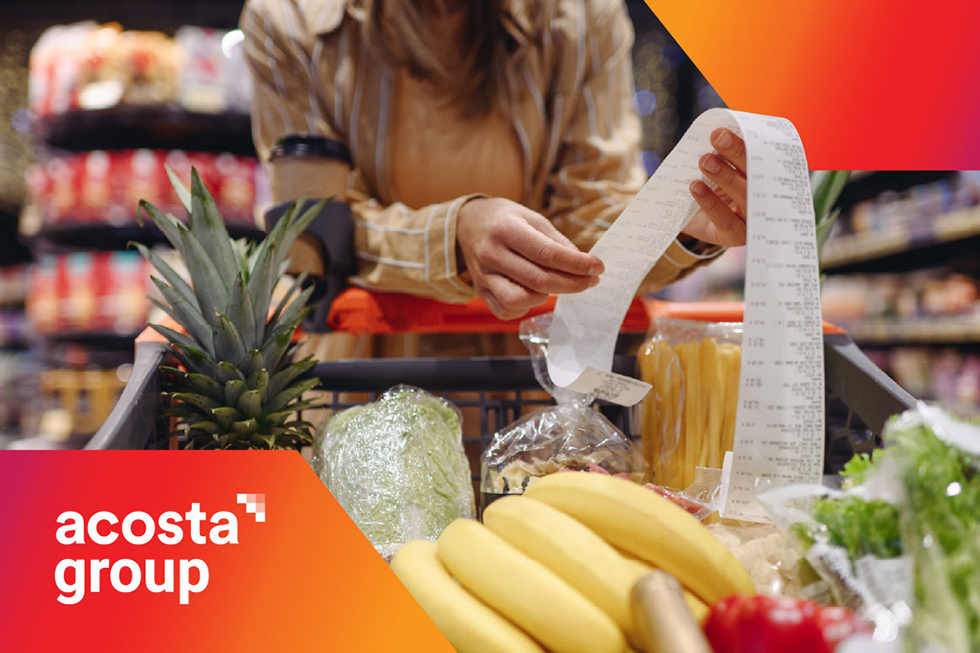The new “State of the Shopper” survey from Acosta Group offers a nuanced view of today’s consumers, revealing how they’re navigating economic uncertainty and tariff concerns with resilience and adaptability.
Key trends are highlighted for brands and retailers based on insights from the study, conducted with Acosta Group’s proprietary U.S. shopper community.
“The latest findings underscore shoppers’ seemingly conflicted opinions regarding concerns about the economy, tariffs and their own financial stability,” said Kathy Risch, SVP of shopper insights and thought leadership, Acosta Group.
“After the pandemic and five years of inflationary concerns, shoppers have clearly adopted new behaviors. They’ve become accustomed to cutting back on spending, shopping across channels for deals and splurging, thoughtfully, on those indulgences that are most meaningful.”
According to the study, most consumers describe the economy in negative terms, with overall sentiment declining by 30 percent through April. There are, however, recent indications that outlook may be improving.
Data also reflects that shoppers are becoming less concerned about inflation and are easing up on their discretionary spending cuts.
Still, 60 percent of shoppers say they are more worried about rising prices than they were six months ago, especially when it comes to food and grocery costs, which remain the most persistent pain points.
Tariffs are a source of concern. Most shoppers define tariffs as taxes on imports, but many are confused about what they mean and their broader impact.
Concerns are highest for tariffs on food and beverages (60 percent), apparel (42 percent), major goods like cars (52 percent) and electronics (51 percent). Gen Z is the most optimistic, with 45 percent expecting positive outcomes from tariffs over the next three to five years. However, 62 percent of consumers worry that tariffs may lead to a recession in 2025, with that concern rising to 70 percent for Millennials.
Shoppers adjust, focus on value
Despite overall economic uncertainty, relatively few consumers express a poor outlook for their personal finances or job security, though one-third anticipate increased stress levels in the coming year. Households with children are particularly sensitive to inflation concerns.
Among consumers with a more pessimistic view of their personal financial situation, a majority have reduced discretionary spending on items like dining out (80 percent), travel (69 percent) and major purchases (65 percent).
Most shoppers say they have not seen any price reductions in the past six months. Nearly 30 percent report shopping more often at discount grocery or dollar stores, and more than 25 percent say they are visiting specialty grocers less often due to personal financial constraints.
Still, traditional grocers remain the top channel of choice, at 78 percent, followed by mass retailers at 64 percent and discount retailers at 39 percent.
Although growth in private label unit share has slowed since mid-2023, nearly half of shoppers (48 percent) now say they choose store brands because they want to – not because they have to. In contrast, only 16 percent cite financial necessity as the main reason for choosing store brands.
Splurging amid cutbacks
In its 2025 consumer predictions, Acosta Group stated that consumers will crave affordable indulgences away from home. According to the study, consumers continue to prioritize indulgences despite cutbacks in discretionary spending. Dining out, while impacted, is still the top splurge for 66 percent of shoppers.
Opportunities
Consumers are adapting to the economic environment in a variety of ways. Forty percent are buying more store brands, Boomers are reducing waste and seeking deals, and 43 percent of Gen Z are buying less.
“In the midst of economic uncertainty and shifting consumer perceptions, brands need to lead with innovation, tell a compelling story and deliver consistent value,” said Chad Barnett, SVP of national client insights, Acosta.
“For retailers, customized offerings that highlight value and effective use of digital tools and platforms is key. By investing in purpose-driven messaging, smart shelf strategies and a bold digital presence, brands and retailers can differentiate themselves, reassure consumers and win in physical and digital marketplaces.”
Acosta Group’s “2025 State of the Shopper Survey” was conducted April 25-29 with 792 adults who are part of the company’s proprietary shopper community. The group is comprised of more than 40,000 demographically-diverse shoppers across the U.S.

